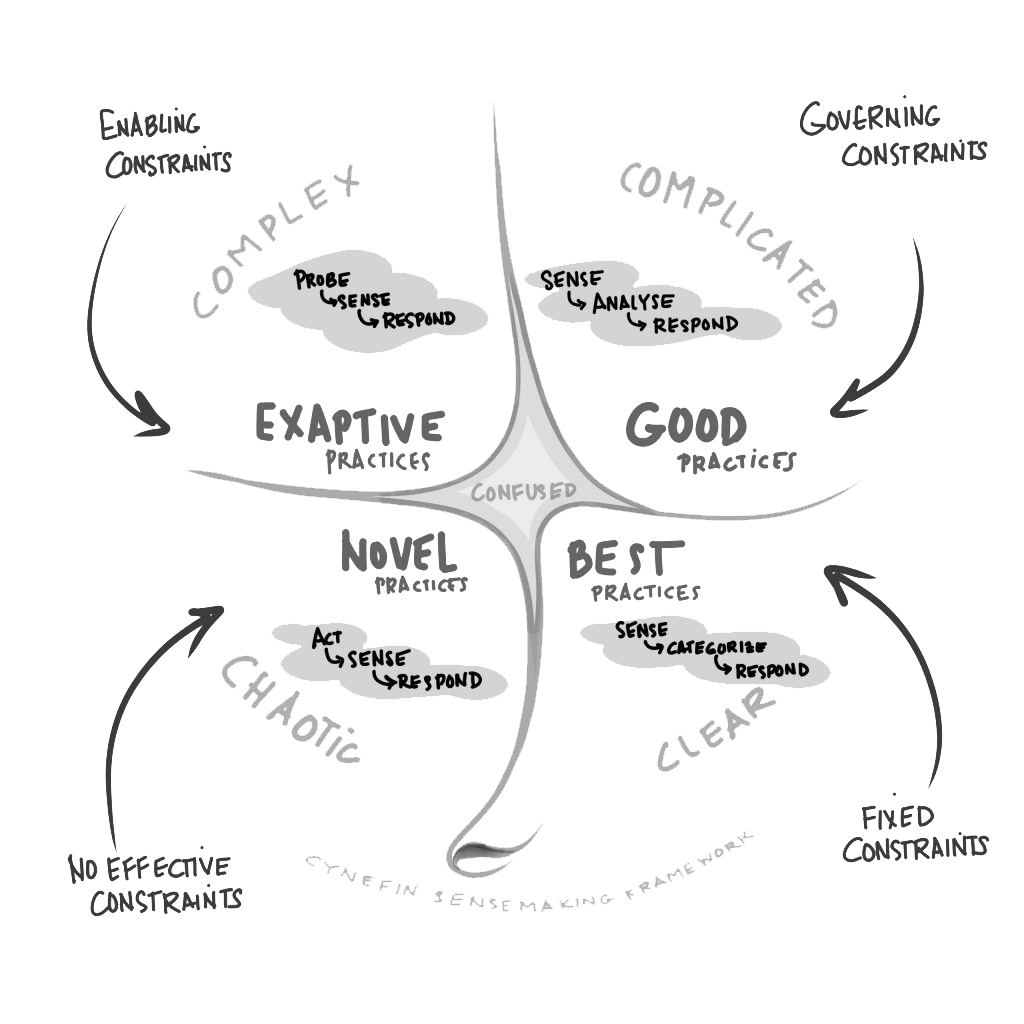What is the appropriate solution … when the situation is simple, complex, complicated or chaotic?
And what is the situation anyway?
Cynefin [kjunewin] is the Welsh word for ‘habitat’ – and this strangely amoeba-like graph was hard to escape in relevant information bubbles. The Wikipedia entry doesn’t really help.
So what’s the point?
Cynefin is well worth the effort. From the many insights of complex, adaptive systems, Cynefin sews a sense-making device. This framework helps determine what type of situation a problem area is in.
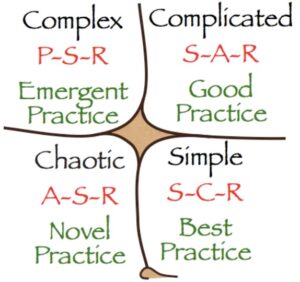
- Dealing with uncertainty
- Making decisions under unknown risk
- collective discourse
- Establish transparency
Background: new world orders, new forms of crisis and no known solutions
The tool, which at first glance seems brittle, originates from policy-making, geopolitical strategy and policy research in the early 1990s. So just half a generation ago, 20 years ago.
The Cold War was over, globalization was in full swing, failed states, power shifts, migration movements, crises and asymmetric conflicts were challenging the tried and tested doctrines of half a century.
The novelty of the situations could not be countered by an already known best practice. It was unclear to the political decision-makers why tried and tested conventional approaches did not continue, why management as you know it remained largely ineffective or made the situations even worse.
"(...) we developed the Cynefin framework, which allows executives to see things from new viewpoints, assimilate complex concepts, and address real-world problems and opportunities."
Snowden & Boone. 2007
When old tools are dull
The answer lies in one of the basic assumptions of the organizational theory of scientific management, that there is always predictability and order in the world.
The catch:
the more complex the circumstances become,
the more likely simplifications fail.
It needed to be thought of in a new, different and inclusive way.
Jootsing, jumping out of the system was urgent and necessary … just how?
"The answer lies in a fundamental assumption of organizational theory and practice: that a certain level of predictability and order exists in the world. This assumption, grounded in the Newtonian science that underlies scientific management, encourages simplifications that are useful in ordered circumstances. Circumstances change, however, and as they become more complex, the simplifications can fail. Good leadership is not a one-size-fits-all proposition."
Snowden & Boone. 2007
Understanding collectively
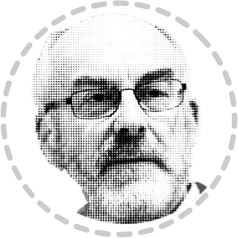

"(Cynefin) is more properly understood as the place of our multiple affiliations, the sense that we all, individually and collectively, have many roots, cultural, religious, geographic, tribal, and so forth."
Snowden & Boone. 2007
What is the nature of the situation?
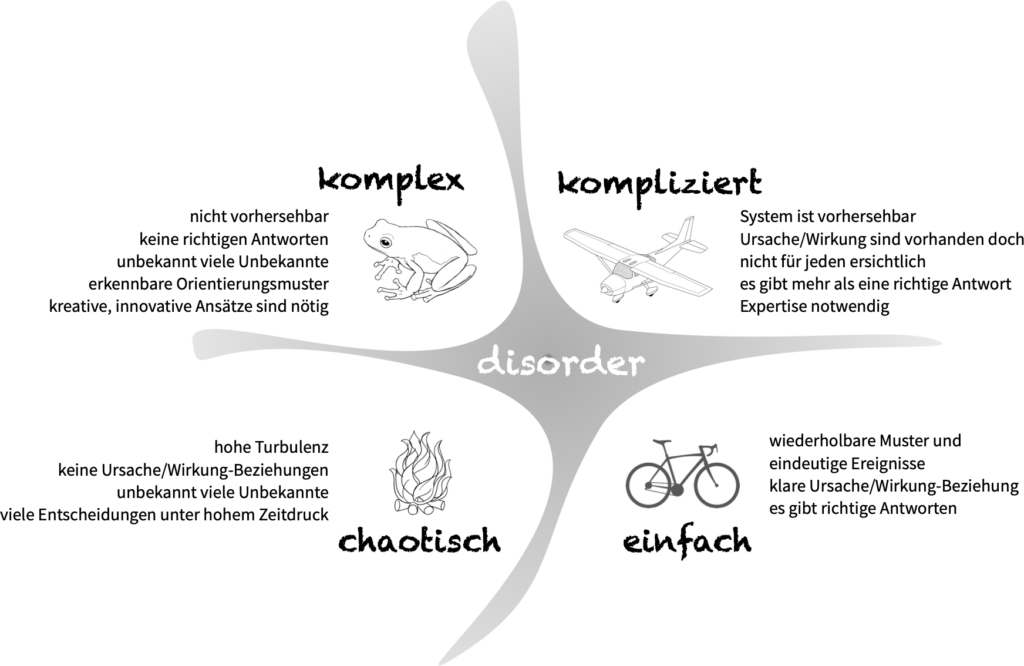
When the type of situation is clear: what practices can be used to find a solution?
Cynefin now provides heuristic guidance on the appropriate methodology for finding a solution – not the solution itself.
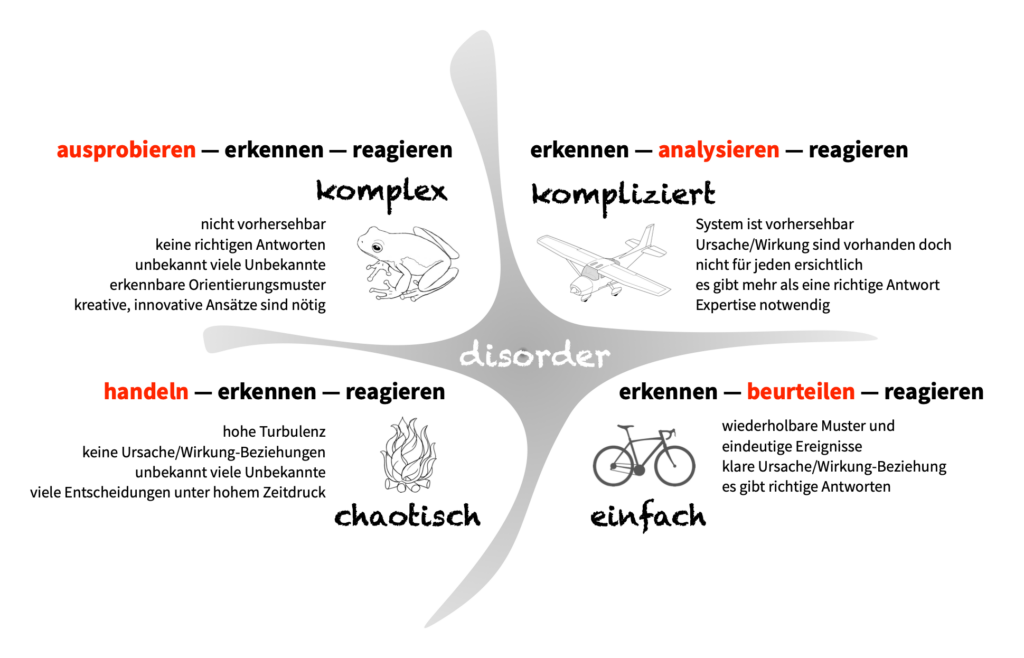
The red terms are there, which made Cynefin popular.
In a complex situation where there are no right answers, the number of variables is unknown, and something develops unpredictably – no one knows what the right thing to do is. There must be experimentation, trial and error.
In a chaotic situation, with high turbulence and when no cause-effect relationships are recognizable, action must be taken quickly, danger is imminent.In addition to the known forms of procedure good practice and best practice, two further ones are added:
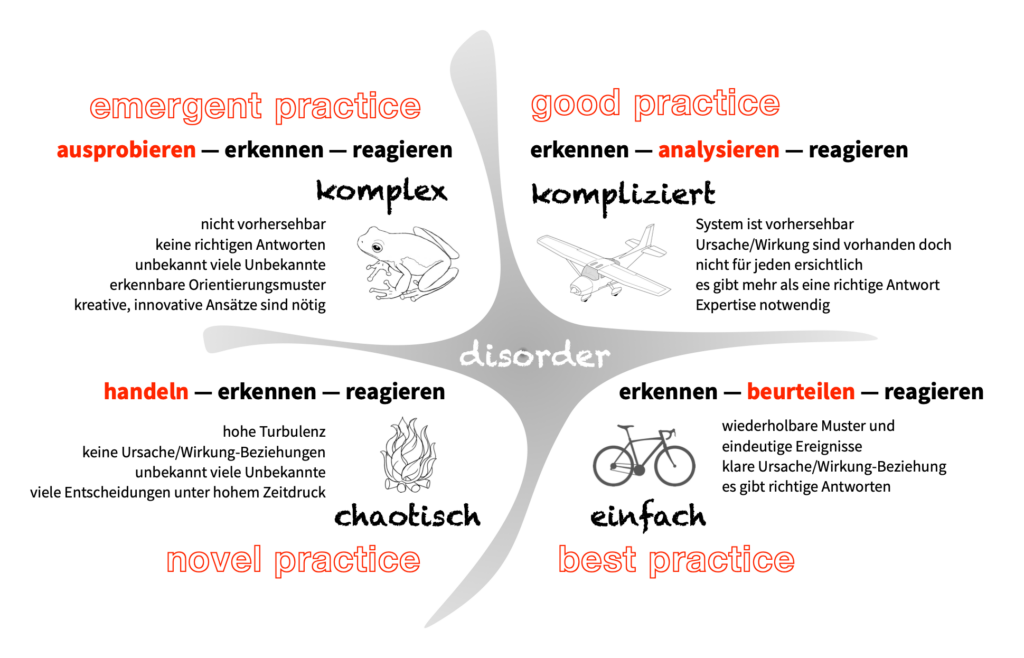
Cynefin is a discursive and group dynamic process
The process of a Cynefin project consists of contextualizing, contextualizing subjective beliefs, structural cognitive thought patterns and errors and often ends in surprise.
Because it’s about unquestioned, unconscious beliefs and assumptions about ‘how the world works’. Only when these are recognized group-dyamically, with changes of position and perspective, can they also give way.
“(…) nearly every contextualization exercise we have seen has ended with expressions of surprise from those participating. They often see, for the first time, patterns that overturn their entrained beliefs about the issue they are considering and about their purpose, goals, and identity.”
Integrating complexity and perspectives
- a sense-making device for unclear, highly dynamic situations in which something has to be done because ‘doing nothing’ would mean foreseeable damage
- offers advice on the appropriate solution
- does not result in solutions but
- helps to find the collective perception and thus a shared understanding about a situation
So Cynefin is an onion with many layers. Peel the onion and you’ll find at its core a group dynamic that helps challenge beliefs and assumptions about the world.
Thus, it is something quite different than the shortening to a simplified graphic would lead one to believe.
David Snowden markets with Cognitive Edge ? Cynefin also as a commercial consulting service. The terms have evolved and become more selective.
